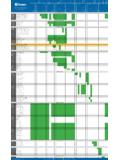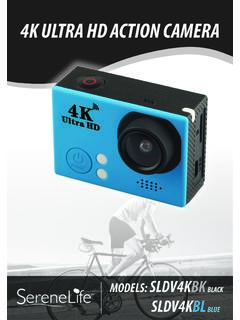Transcription of High Definition (HD) Image Formats for Television Production
1 1 EBU TECH 3299 high Definition (HD) Image Formats for Television Production Status: Specification Geneva January 2010 Page intentionally left blank. This document is paginated for two sided printing Tech 3299 HD Image Formats for TV Production 3 Contents 1. Introduction .. 5 2. Normative 5 3. Other 6 4. Nomenclatures and Image Sampling Systems .. 7 5. System 7 6. System colorimetry and opto-electrical conversion for System S1 to 7 7. Signal Formats for Systems S1 to S4 .. 8 8. Raster structure, digital picture representation and timing reference .. 8 9. Digital Signal Formats for System S1 to S4 .. 8 10. Digital Interfaces and their constraints .. 9 Gbit/s HD-SDI ..9 3 Gbit/s Coaxial cable length ..9 3G-SDI mapping Levels ..9 11. General remarks concerning 3G SDI .. 10 12.
2 System S4 infrastructure (informative note) .. 10 HD Image Formats for TV Production Tech 3299 4 Page intentionally left blank. This document is paginated for two sided printing Tech 3299 HD Image Formats for TV Production 5 high Definition (HD) Image Formats for Television Production EBU Committee First Issued Revised Re-issued PMC 2010 Keywords: high Definition Television , HDTV, Image Format, Progressive, Interlace 1. Introduction This document specifies the basic Image Formats and digital sampling systems for high Definition Television (HDTV) Production in the European 50 Hz environment. It is intended to meet the demands of EBU Members for interoperability and implementation stability in their HDTV Production systems.
3 The application of this specification is intended for, but not limited to, the Television Production environment. Four HDTV Production systems are recognised for use in Europe: System 1 (S1) with 1280 horizontal samples and 720 active lines in progressive scan with a frame rate of 50 Hz, 16:9 aspect ratio. Abbreviated 720p /50. System 2 (S2) with 1920 horizontal samples and 1080 active lines in interlaced scan with a frame rate of 25 Hz, 16:9 aspect ratio. Abbreviated 1080i/25. System 3 (S3) with 1920 horizontal samples and 1080 active lines in progressive scan and a frame rate of 25 Hz, 16:9 aspect ratio. Abbreviated 1080p/25. System 4 (S4) with 1920 horizontal samples and 1080 active lines in progressive scan at a frame rate of 50 Hz, 16:9 aspect ratio. Abbreviated 1080p/50. In order to transport these signals around a Production site, variants of the HD-SDI ( high Definition Serial Digital Interface) are typically used.
4 Designers of HD-SDI infrastructures should carefully study whether to apply the Gbit/s single link HD-SDI (specified in smpte 292M) for Systems S1, S2 and S3 only, or an advanced Gbit/s single link HD-SDI (specified in smpte 424M) for Systems S1 to S4 inclusive, but with some additional constraints. Section 10 of this document discusses these interfaces and their practical constraints in more detail. 2. Normative references This specification depends upon the following external specifications, which define in detail: R G B colour encoding; R G B analogue and digital representation; Y P BP R colour encoding, analogue representation and analogue interface; and Y C BC R colour encoding and digital representation. Note that the apostrophe, , in the above means that the signal has been gamma corrected.
5 HD Image Formats for TV Production Tech 3299 6 Normative Reference Title smpte 274M-2008 1920 x 1080 Image Sample Structure, Digital Representation and Digital Timing Reference Sequences for Multiple Picture Rates. smpte 296M-2001 1280 x 720 Progressive Image Sample Structure Analogue and Digital Representation and Analogue Interface. smpte RP 177-1993 Derivation of Basic Television Colour Equations smpte 292M-2008 HDTV Signal/Data Serial Interface smpte 372M-2009 Dual Link smpte 292M Interface for 1920 x 1080 Picture Raster smpte 424M-2006 3 Gbit/s Signal/Data Serial Interface ("3G SDI") smpte 425-2008 3 Gbit/s Signal/Data Serial Interface Source Image Format Mapping smpte 297M-2006 Fibre Optic Interfaces for SDTV and HDTV interfaces. smpte 377M-1 2009 MXF File Format Specification smpte 384M-2005 Mapping of uncompressed pictures to the MXF Generic Container CIE Publication (1986) Colorimetry, Second Edition.
6 ITU-R Worldwide unified colorimetry and related characteristics of future Television and imaging systems ITU-R Parameter values for the HDTV standards for Production and international programme exchange 3. Other References Reference Title EBU Tech 3298 An EBU route map to high Definition (HD) EBU R112-2004 EBU Statement on HDTV standards EBU R124-2009 Choice of HDTV Compression Algorithm and Bitrate for Acquisition, Production , Contribution & Distribution ITU-R Digital interfaces HDTV studio signals ITU-R Serial digital fibre transmission system for signals conforming to Rec ITU-R , ITU-R and ITU-R ITU-R Jitter specifications and methods for Jitter measurements of bit-serial signals conforming to Recs.
7 ITU-R , 799 and 1120 ITU-R SDI-based transport interface for compressed Television signals in networked Television Production based on Rec. ITU-R ITU-R 1280 720, 16:9 progressively-captured Image format for Production and international programme exchange in the 50 Hz environment Tech 3299 HD Image Formats for TV Production 7 4. Nomenclatures and Image Sampling Systems Table 1: HDTV Systems 1 to 4 EBU System Nomenclature 1 of abbreviations [activeLinesScanning /frame-rate] Luma or R G B Samples per active line (S/AL) Active lines per frame (picture) (AL/F) Frame rate, Hz Luma or R G B sampling 2 frequency (fs), MHz Luma sample periods per total line (S/TL) Total lines per frame Net Image Bit Rate (4:2:2, 10 bit) [GBit/s] Corresponding smpte system nomenclature S1 720p /50 1280 720 50 1980 750 smpte 296M System 3 S2 1080i/25 1920 1080 25 (50 Hz field rate)
8 2640 1125 smpte 274 System 6 S3 1080p/25 1920 1080 25 2640 1125 smpte 274 System 9 S4 1080p/50 1920 1080 50 2640 1125 smpte 274 System 3 The digital representation shall employ eight or ten bits per sample in its uniformly quantized (linear) PCM coded form. The Image aspect ratio for Systems S1 to S4 shall be 16:9, and the sample aspect ratio 34 shall be 1x1 ( square pixels ). 5. System compliance The specification of a System in compliance with this document shall state, inter alia: Which of the systems of Table 1 is implemented Which signal interface is implemented (R G B , Y PBP R, Y C BC R, R G B A or Y C BC RA) Which quantisation (eight bit, ten bit) is used.
9 In the case of 3G-SDI interfaces, which Level is implemented (see ) and what is the tested cable length (including cable type, BNC, crimping technology, etc.). 6. System colorimetry and opto-electrical conversion for System S1 to S4 Equipment shall be designed in accordance with the colorimetric analysis and opto-electronic transfer function defined in ITU-R Picture information shall be linearly represented by red, green and blue tri-stimulus values (RGB), lying in the range 0 (reference black) to 1 (reference white), whose colorimetric attributes are based upon reference primaries with the following chromaticity coordinates, in conformance with ITU-R , and whose white reference conforms to CIE D65 as defined by CIE and Table 2: 1 The EBU uses the nomenclature in Table 1 whilst the ITU-R uses a different nomenclature, such as interlaced as "2.
10 1" or alternatively 1920 1080/50/I where "50" corresponds to the field-rate (see ITU-R ) 2 Usually the sampling frequency on the interface; some equipment may use a different sampling frequency internally. 3 The ratio of the densities of vertical samples and horizontal samples . 4 For interlace scanning several factors reduce vertical resolution, please see EBU Tech 3298. HD Image Formats for TV Production Tech 3299 8 Table 2: Opto-electronic conversion characteristics Item Parameter Value 1 Opto-electronic transfer characteristics before non linear pre-correction Assumed linear V = for 1 L V = L for > L 0 where: L : luminance of the Image 0 L 1 2 Overall opto-electronic transfer characteristics at source V : corresponding electrical signal Chromaticity coordinates (CIE, 1931) X Y Primary.



![123Movies~Watch!! [ The New Mutants ] Online Full Free HD](/cache/preview/8/0/8/b/f/c/4/b/thumb-808bfc4bbdc821cc8f7068963d7e8c31.jpg)




